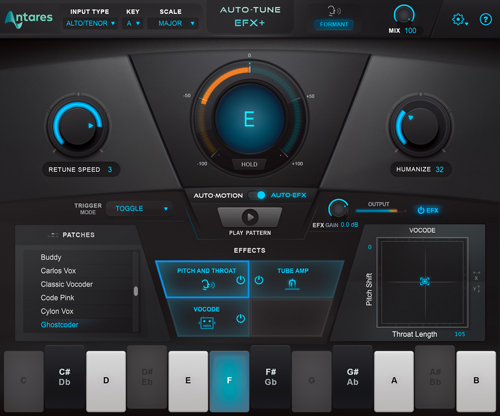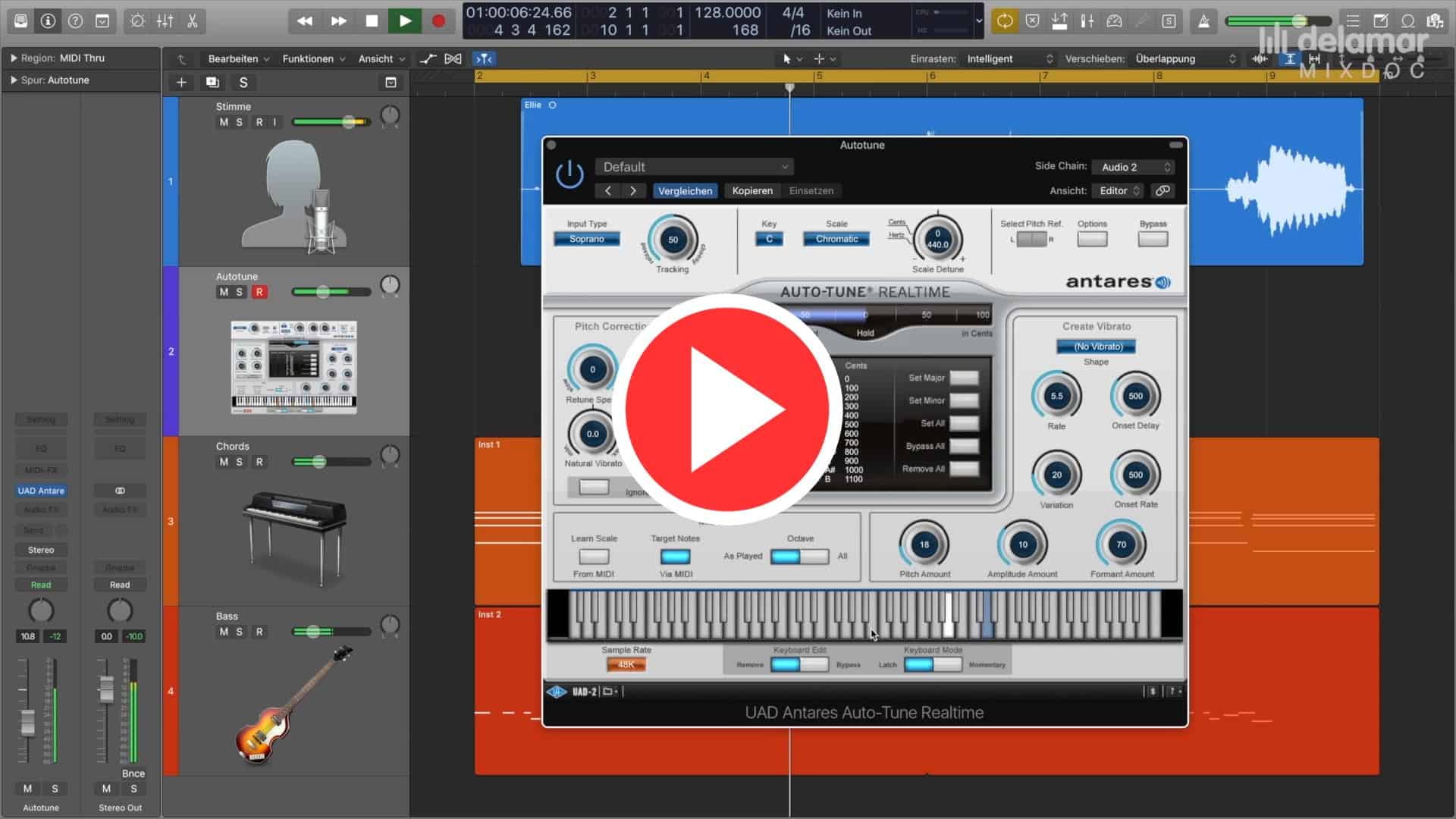
- #Use Auto Tune Efx 3 Chromatic Download Antares Auto#
- #Use Auto Tune Efx 3 Chromatic Crack Is Designed#
- #Use Auto Tune Efx 3 Chromatic How To Use Your#
Use Auto Tune Efx 3 Chromatic Crack Is Designed
Simply set the important thing and scale of your monitor, regulate the Retune Velocity on your desired impact, and Auto-Tune EFX three does the remaining.Auto-Tune EFX VST. This one is the easiest-to-use device for real-time pitch correction and the enduring Auto-Tune Vocal Impact. Auto-Tune EFX 3 Crack is designed to make virtually every little thing automated.
Also, with Auto-Tune 8, it's virtually impossible to know that Auto-Tune had been used on a track.In the 22 years since it’s inception (1997), Auto-Tune has been the industry standard for tuning vocals, and for good reason. Now, with Auto-Tune 8, the introduction of Flex-Tune establishes a new standard of natural real-time pitch correction. This tutorial shows you the power within this amazing audio processor.For two decades, Auto-Tune has stood alone as the worldwide standard in professional pitch (and more recently, time) correction.
Use Auto Tune Efx 3 Chromatic How To Use Your
Now I must say though, there is a limit to how much tuning or editing you CAN do to a less than perfect performance. If something doesn’t sound right, keep tweaking until it does. I may take some heat for saying so, but this doesn’t have to be the case if you learn how to use your tools properly pay attention to what the settings do. There are many people out there wanting to lay blame on the tools for their work sounding robotic, or unnatural. In the past 20 years, I’ve never had a single negative comment, or even anyone notice that I’ve used a tuning software, which is exactly as it should be. There are many other tuning softwares available, but none have the proven to me better.
Use Auto Tune Efx 3 Chromatic Download Antares Auto
Auto Mode basically runs in real-time, and analyzes the audio as it passes through. There’s Auto Mode, also know as “lazy mode”, and Graphical Mode, also known as “Auto-Tune”. I could probably write an entire book on tuning vocals, but the intent here is to give you an inside look at the most commonly used parameters and how to use Auto-Tune in a more effective way….How To Use Auto Tune Efx 3 Chromatic Taeyeon Stay Auto Tune Massive Win Vst Crack Rgc Audio Sfz Professional Vst Download Antares Auto-tune 3 Vst Antares Autotune Evo 6.09 Vst Crack Auto Tuning Guitar System Dual Boot Windows With Mac Os Sierra Without Boot There are two correction modes and ways to use Auto-Tune.
This is far superior to every single bit of audio being automatically adjusted. (Same for most other professional tuning software) Then, you choose which notes are to be tuned, and how, and which are to be left alone. Graphic Mode is a bit more involved, but yields MUCH better results! Graphic Mode basically works like this: You capture (track pitch) the performance once into the plug-in, so it can be analyzed, displayed and edited. The only time I personally use Auto Mode is when I have several songs that need to be mixed in a very short amount of time, and there simply is not enough time, or budget, to properly tune the tracks. Adjusting your settings can help it to do a better job of tuning, but nothing replaces your own ears on what needs to be tuned, and what does not.
Instrument -For violins, violas, and other types of monophonic instruments Paying attention to a few of these settings following, you can minimize Auto-Tune attempting to tune things that should not be, such as vibrato and notes that are intentionally slurred from one note to another.Input Type: This basic setting help Auto-Tune focus on specific frequency ranges and types based upon the type of content you are trying to tune. With that being said, there are some very important things to pay attention to, as they will help you get much better results. It is designed to automatically analyze audio as it passes through, and tune up or down to the nearest note everything that passes through. Auto ModeAuto Mode is the default mode when opening Auto-Tune.
A singer sings a little bit sharp on a trying to sing a “C”. For example, you have a song in the key of “C”, which has no sharps or flats. Chromatic is the default scale, and probably most popular, but setting the proper key of your song will narrow down the choices of tuning from eleven notes down to the seven within a given key.
Setting a very fast time will remove any variations in pitch, but can yield some very unnatural results. As you can see from the picture to the right, there are many other scales to choose from, and yes, Auto-Tune is used world wide, and there are many other scales available to those around the world using alternate tuning and scales.Retune Speed: This is one of the most important settings to pay attention to, as it sets how fast Auto-Tune will tune a note, similar to a glide or fade time from non-tuned to fully tuned processing. This is another great starting point for Auto Mode usage. When setting the scale to C Major in this same scenario, the singer would have to sing past “C#” for it to create and error and try to correct to a “D”.
Leaving it at it’s default setting of 0, will not affect the original vibrato, but adjusting will minimize the amount of vibrato allowed. Typically you would start a setting of 0 while setting the Retune speed, making sure all notes that need tuning are being tuned, then adjusting the Humanize will help with sustained notes from not sounding overly tuned, while still being fast enough to tune shorter duration notes.Natural Vibrato: This is independent of your pitch settings and is used solely to tame natural vibrato of a performance. If this is what you are looking for, absolutely start here with a very fast time!Humanize: This allows sustained notes to have a slower Retune speed than the shorter duration notes.
You can then play in a melody from a MIDI device, and the track will be tuned to what you play. When engaging, Auto-Tune does nothing until a MIDI note is present from a keyboard or MIDI track, then it tunes to the MIDI notes present. Backing vocals typically shouldn’t have as much vibrato, therefore, minimizing vibrato is preferred.Target Notes Via MIDI: This is quite fun to play with, along with fast Retune speeds. This is something that would typically be used with a lead type of vocal, allowing the natural vibrato to be ignored. If you have a track with a lot of vibrato, try turning this on and see if it helps.


You can draw or auto-create lines/curves or notes. Turn off the “Track Pitch” button: Self-explanatory, but necessary to start tuning.You have two options now for tuning. As long as all the information that needs to be tuned is tracked in, you can then proceed.
I personally find this one quite difficult to use. The Curve Tool is used when you would like to free-hand draw in pitch correction. It is typically used when you want to hold a straight pitch, or bend evenly from one pitch to another. The Line Tool is used to draw multi-segment lines on the pitch graph. The ToolsThere are a few tools to start with here and I’ll describe them briefly from left to right.
The Scissors Tool is used to cut existing lines or notes into separate pieces for individual editing. The Arrow Tool is the most commonly used tool, as it is how you select and edit existing lines or notes. I tend to use these more often than the line tool. These are constrained to specific pitches and cannot vary off of them.
Simply click and drag a box around what you would like to zoom into, and release to zoom. The Magnifying Glass is used for zooming. We’ll take a look at automatically generating lines or notes shortly.


 0 kommentar(er)
0 kommentar(er)
